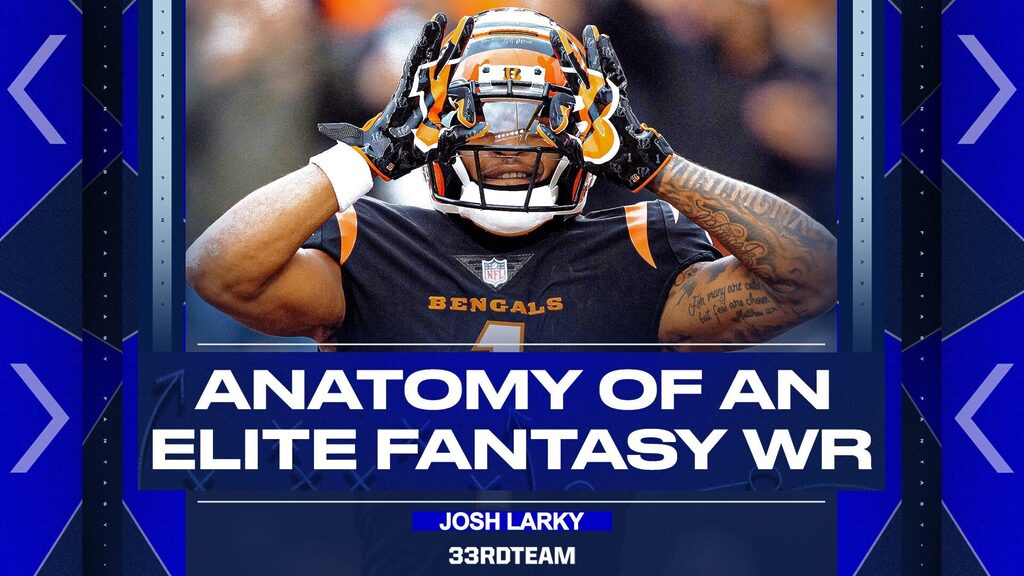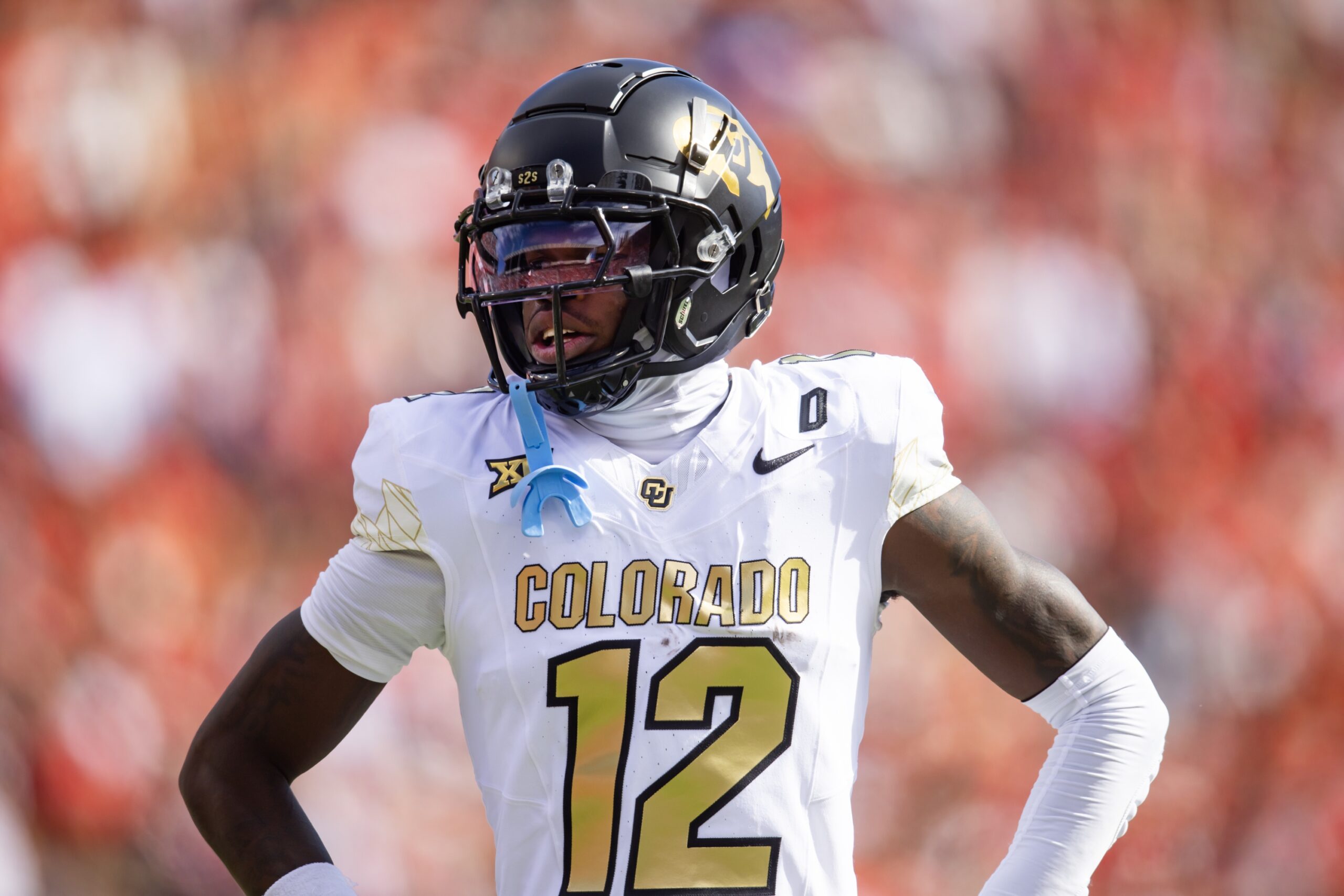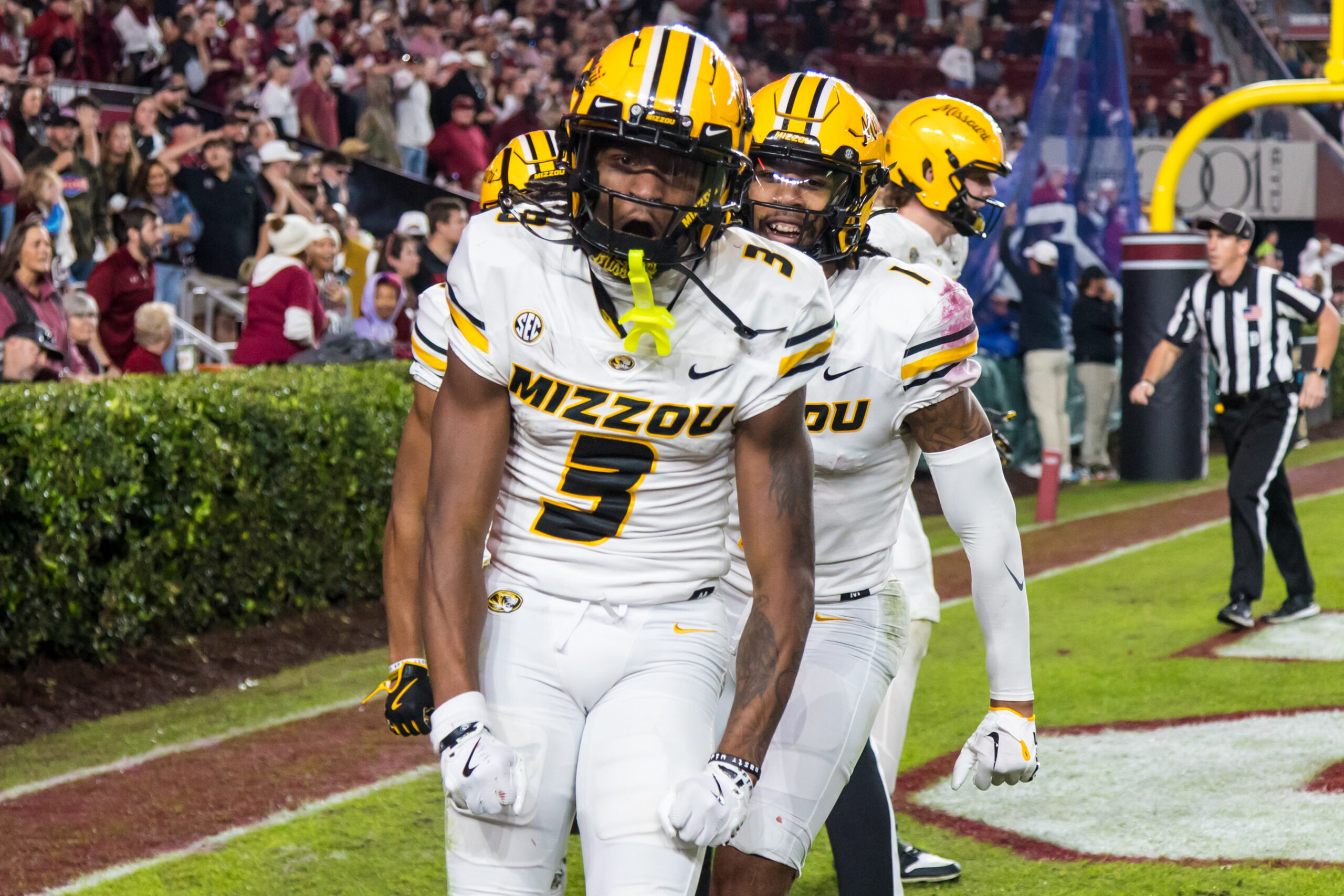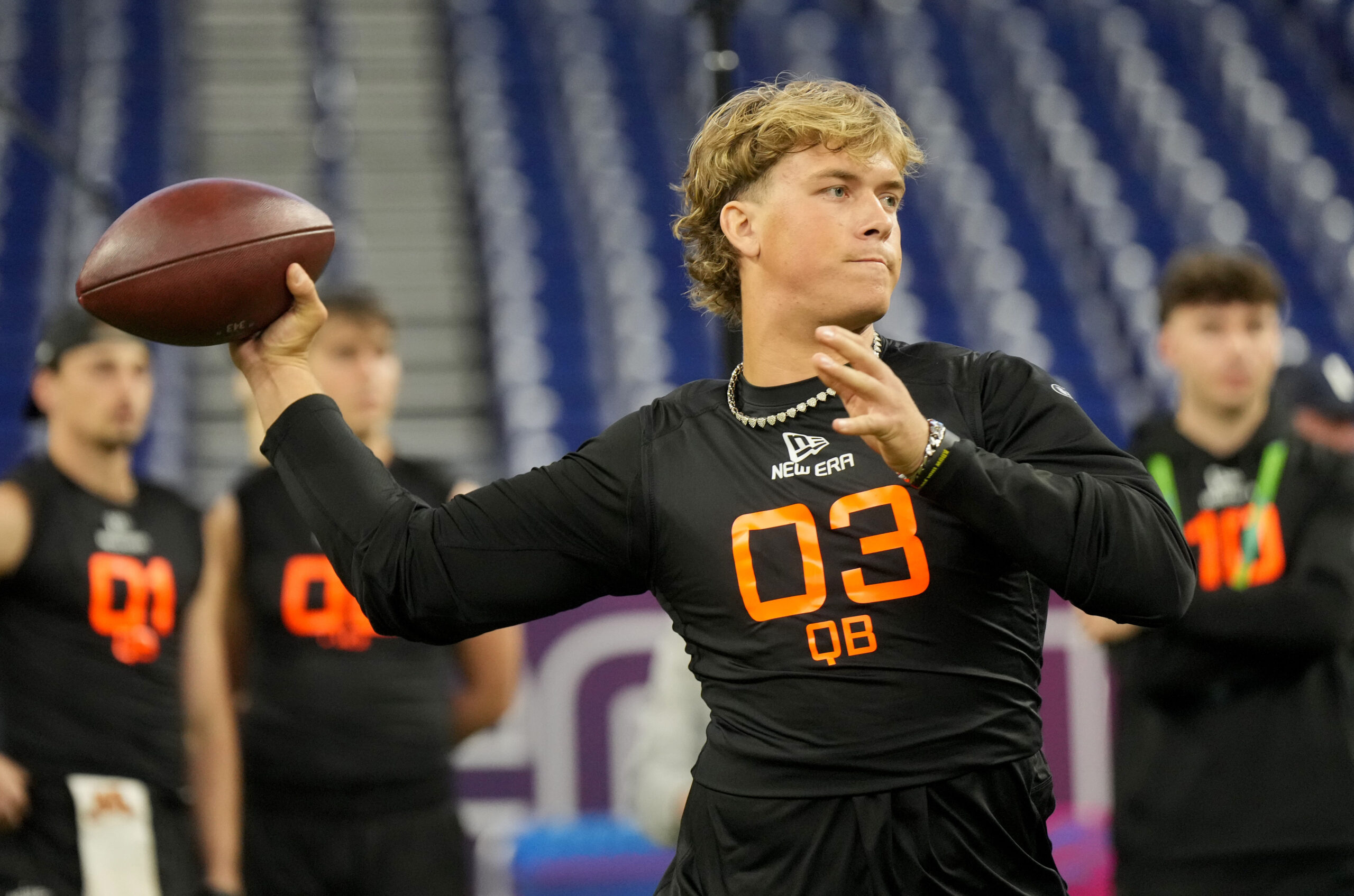Analysis
8/7/23
6 min read
Anatomy of an Elite Fantasy Football Wide Receiver

Use this article as a guide for understanding what factors need to be in place for a wide receiver to have an elite fantasy finish. At the bottom, you can see a few quick takeaways based on this research.
Defining an Elite Fantasy Receiver
The past 10 seasons (2013-2022) of wide receiver production were analyzed for this study. For 2013-2020, Weeks 1-16 were used, and for 2021 onward, Weeks 1-17 were included. Essentially, any week that did not count in most fantasy football leagues was excluded.
Generally, 16 PPR fantasy points per game lands a wide receiver in the top 12 at his position. In the past 10 seasons, there have been 108 receivers — roughly 11 per season — to play in at least 12 games and meet the 16 points per game threshold.
Typical Elite Season
Below, you can see the average season for these 108 elite wide receivers, which can help anchor expectations.
| Games | Targets | Rec | RecYds | TDs | PPR/Game | |
| Elite WR Season | 14.7 | 141 | 93 | 1270 | 9 | 18.8 |
For those wondering, taking median numbers (instead of average numbers) provided nearly identical results.
Years In The League
When looking at experience level, players in their second through ninth years account for about 90 percent of all elite wide receiver seasons during the past 10 years.
Years is the number of years in the league. N is the number of elite wide receivers falling into each experience bucket. Percent is simply dividing N by the 108 wide receivers in the sample.
| Years | 1 | 2 | 3 | 4 | 5 | 6 | 7 | 8 | 9 | 10 | 11 | 12 | 13 | 14 |
| N | 4 | 14 | 16 | 9 | 17 | 16 | 11 | 9 | 6 | 2 | 2 | 1 | 0 | 1 |
| Percent | 4% | 13% | 15% | 8% | 16% | 15% | 10% | 8% | 6% | 2% | 2% | 1% | 0% | 1% |
Among wide receivers going in the first few rounds of 2023 fantasy drafts, DeAndre Hopkins (Year 11), Davante Adams (Year 10), Stefon Diggs (Year 9) and Amari Cooper (Year 9) all carry some risk due to age and wear and tear on their bodies.
Depth Chart
It is important to be the first or second option in the offense.
Among the 108 wide receivers with at least 16 fantasy points per game in the past decade, 91 of them (84 percent) were the top target earners in their offense on a per-game basis. 16 other elite receivers (15 percent) were the second option in their respective passing offense. The one receiver who finished third in targets per game was Wes Welker, who was part of the 2013 Denver Broncos team that saw Peyton Manning pass for 5,477 yards and 55 touchdowns.
Total Targets
Below, you’ll see how many of the 108 elite fantasy receivers fell into each target bucket. The percent row indicates the likelihood a receiver will finish with at least 16 fantasy points per game, given their target bucket.
We can interpret the below table as 10 percent of all wide receivers with 100-119 targets in a season finish with at least 16 fantasy points per game, while 75 percent of wide receivers with 140-159 targets finish with at least 16 fantasy points per game.
| Targets | 80-99 | 100-119 | 120-139 | 140-159 | 160-179 | 180 or more |
| Elite WRs | 4 | 12 | 32 | 38 | 19 | 3 |
| Percent | 2% | 10% | 33% | 75% | 100% | 100% |
Draft wide receivers that should see at least 140 targets in the early rounds of fantasy drafts.
Turning to team offense, better-passing offenses generally have more pass attempts, passing yards and passing touchdowns, which in turn benefits fantasy receiving production.
Team Situation
For each season, I broke each offense into top 10, 11th-20th and bottom-12 among the 32 NFL teams for pass attempts, passing yards and passing touchdowns.
We can see the vast majority of elite fantasy receiver production comes from offenses ranking top 10 in passing statistics.
| Top 10 | 11th-20th | Bottom 12 | |
| Pass Attempts | 57 (53%) | 33 (31%) | 18 (17%) |
| Passing Yards | 71 (66%) | 32 (30%) | 5 (5%) |
| Passing TDs | 76 (70%) | 21 (19%) | 11 (10%) |
Only four of the 108 wide receivers were on offenses that ranked below average (bottom-16) in pass attempts, passing yards and passing touchdowns.
This does not bode well for Drake London (Atlanta Falcons), Christian Watson (Green Bay Packers) and DJ Moore (Chicago Bears). All three of those offenses should be below average in all three categories. Adams (Las Vegas Raiders), Hopkins (Tennessee Titans) and Terry McLaurin (Washington Commanders) also play on offenses with a chance to rank below average across the board. These six wide receivers are riskier bets than other early-round options to finish as fantasy WR1s due to their offensive environment.
When looking at the 17 elite fantasy receivers who were not the top target earners in their offense, 16 of 17 played on a team that ranked top 10 in at least one of these three categories.
Top 24 Fantasy Potential
Fourteen fantasy points per game is generally needed to finish as a top 24 fantasy receiver. In the past 10 years, just three receivers finished between 14-16 fantasy points as the No. 2 target earner on a below-average passing offense across the board.
Given this information, we shouldn’t expect receivers like Treylon Burks (Titans) or Jahan Dotson (Commanders) to finish as fantasy WR2 types.
Rookie Quarterbacks
There have been 29 rookie quarterbacks in the past decade to start at least eight games. Among this group, Justin Herbert is the only one to support a wide receiver who reached 16 fantasy points per game (Keenan Allen).
Just five other wide receivers reached 14 fantasy points per game (top 24 fantasy production), with a rookie quarterback starting at least eight games. None of those five receivers played with a highly mobile rookie quarterback.
Michael Pittman (Indianapolis Colts) is the only receiver going in the top 60 at the position — based on ADP — who will be playing with a rookie quarterback in 2023. He’s an easy fade in the fifth and sixth rounds of 2023 fantasy drafts.
Quick Takeaways
Here some of the NFL's elite wide receivers split into easily definable categories:
- Receivers whose age/experience could be a detriment for elite fantasy production: Hopkins, Adams, Diggs and Cooper.
- Receivers who aren’t the top target earners in their offense: Jaylen Waddle, DeVonta Smith, Tee Higgins and Mike Williams. Others who quite possibly aren’t the top target earners are Deebo Samuel or Brandon Aiyuk, and Christian Kirk.
- Receivers who play on concerning passing offenses: Adams, Hopkins, London, Moore, Watson and McLaurin.
- Pittman is the only receiver going in the first six rounds of fantasy drafts who will be playing with a rookie quarterback.
- Diontae Johnson and Marquise Brown are the two receivers routinely available in Rounds 5-7 of fantasy drafts with a strong chance to reach 140 targets. Both look like decent receivers to target in drafts.
Follow The 33rd Team Podcast Network on Spotify and Apple Podcasts.






